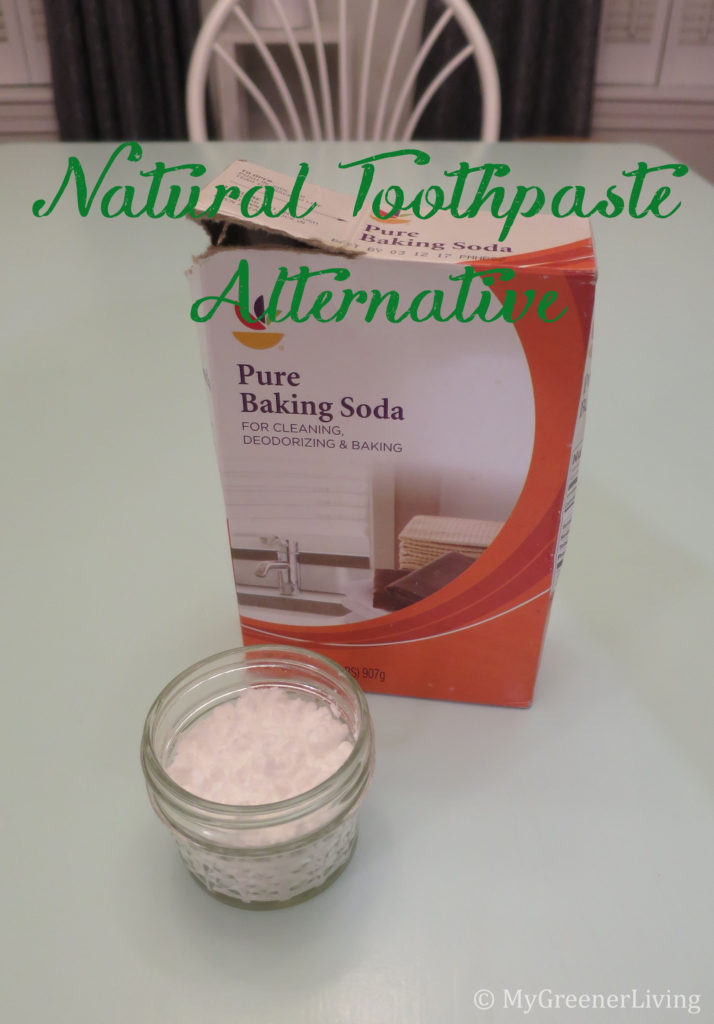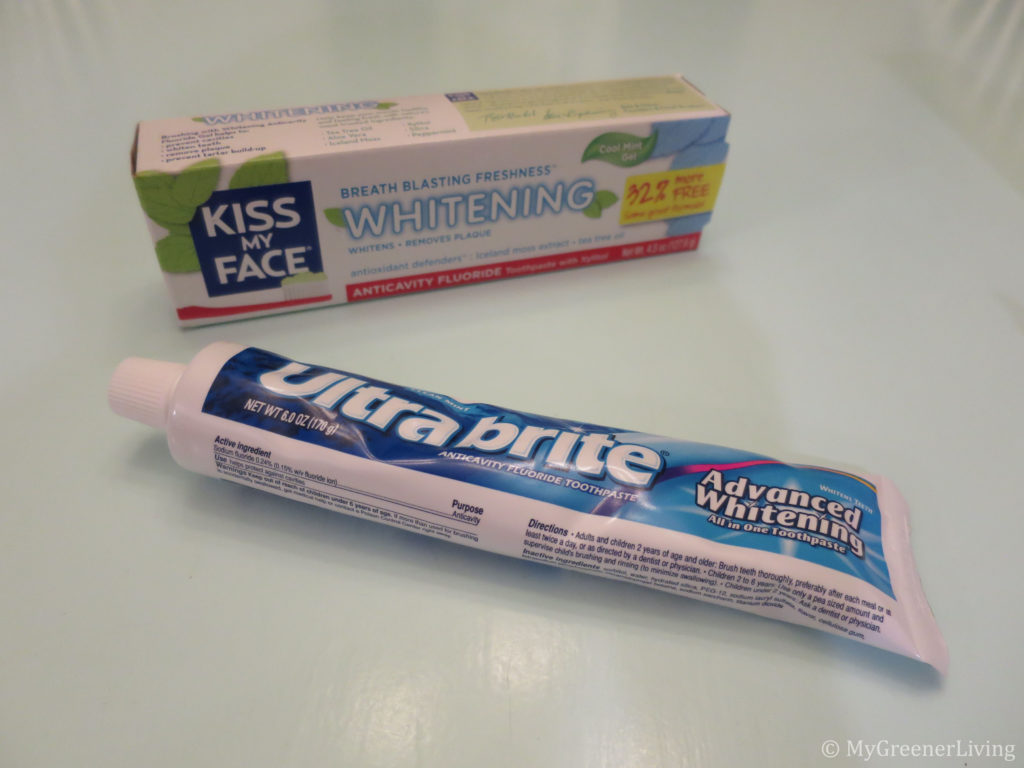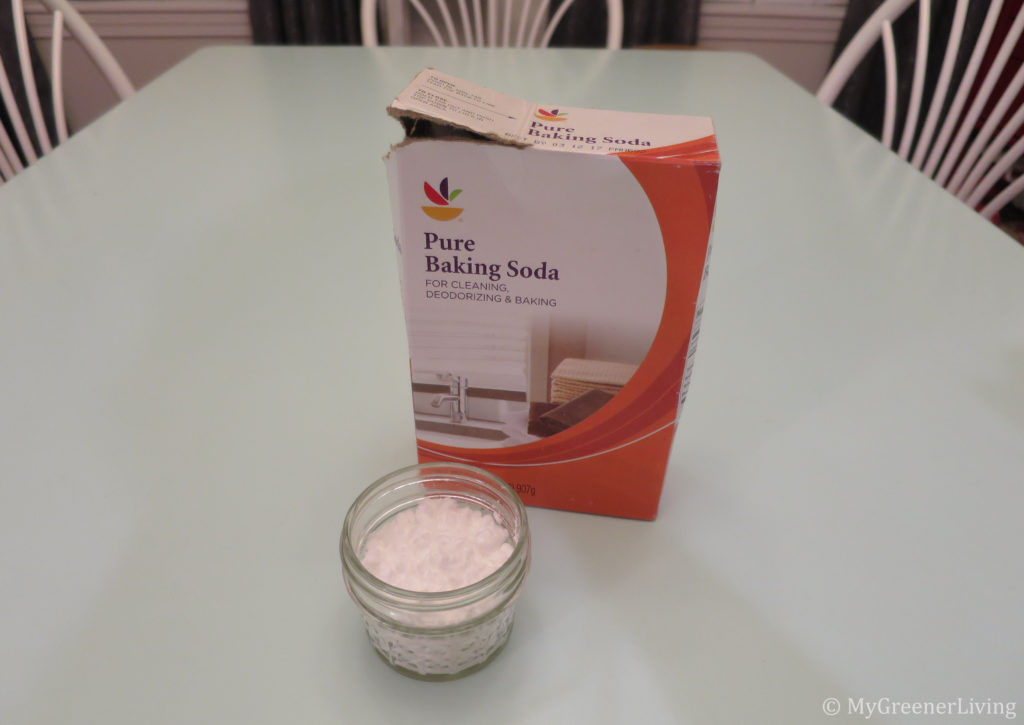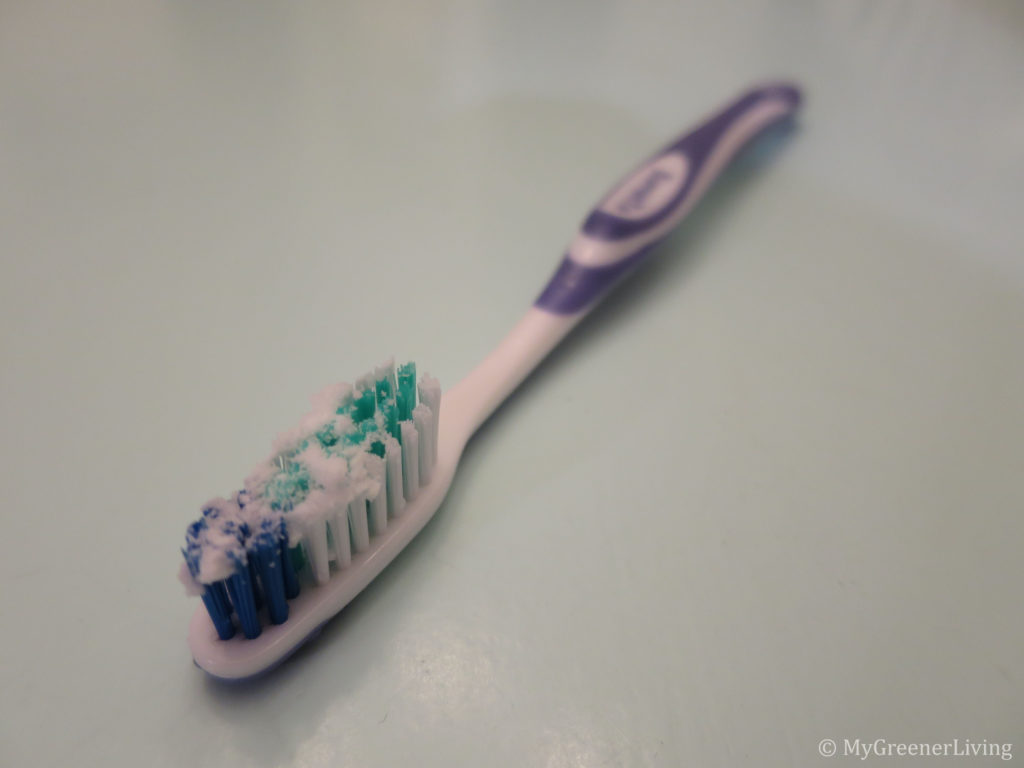Not long after I started my journey to become more environmentally friendly and less wasteful, I saw a post that made me think about something I use (consume?) multiple times a day: toothpaste. Why do I say consume? Well, it’s in your mouth, you may (should) spit it out, but I guarantee you swallow some, and 2-3 times a day or more, for a lifetime…that’s a lot of toothpaste eaten! I asked myself, is there a natural toothpaste alternative?

Disclaimer: This post contains affiliate links. See my Disclosure Policy for more information.
What’s in toothpaste?
So, if I am eating my toothpaste, what am I really eating? Prior to switching to a natural alternative to toothpaste, I had been using Ultrabrite Advanced Whitening Toothpaste.

Ultrabrite Advanced Whitening Toothpaste Ingredients
Active ingredients: sodium fluoride (0.24%) (0.15% W/v fluoride ion). Inactive ingredients: sorbitol, water, hydrated silica, peg-12, sodium lauryl sulfate, flavor, cellulose gum, tetrasodium pyrophosphate, cocamidopropyl betaine, sodium saccharin, titanium dioxide.
I have read many arguments both for and against fluoride, so I will abstain from comment on that item. However, the Environmental Working Group lists sodium fluoride as a 5 on a scale of 1-10 where 1 is best.
Here’s the EWG breakdown of all the ingredients (Ultrabrite toothpaste is not rated by the EWG yet)
- sodium fluoride – 5
- sorbitol – 1 (this is a sugar alcohol)
- water – 1
- hydrated silica – 1
- PEG-12 – 3
- sodium lauryl sulfate – 2, skin irritant
- flavor – 4, this is a big unknown, it could be anything natural or synthetic
- cellulose gum – 1
- tetrasodium pyrophosphate – 1
- cocamidopropyl betaine – 4, irritant, can cause contact dermatitis, suspected environmental toxin
- sodium saccharin – 1, an artificial sweetner
- titanium dioxide – 1-3, inhilation concern (not a concern when in toothpaste)
Overall, the EWG rating is not too bad. However, do I really need to put my body in contact with so many ingredients, including an artificial sweetener and skin irritant, just to make my teeth clean? No!

I looked at other commercially available toothpaste, including Kiss My Face Whitening Anticavity Toothpaste. At a glance it looked more natural, but a review of the EWG rating of 4 makes me realize it’s just as bad, if not worse than Ultrabrite.
I knew I could find a more natural toothpaste alternative and still keep my mouth healthy!
Natural “toothpaste” – tooth cleaner
I started researching natural toothpaste, and found that there is a LOT out there! The two main types of natural toothpaste were coconut oil-based and baking soda-based. I know that coconut oil is antibacterial, and as you know from my posts about lotion, soap, sunscreen, and more, I love coconut oil in my cosmetics. But I didn’t like the idea of coating my mouth with oil, knowing that’s all I’d taste for a while. So I decided to investigate baking soda toothpaste. I came across a recipe that called for simple ingredients – baking soda, water, pure stevia powder, and peppermint oil. I gave this a try, and found it hard to work with. The stevia and mint seemed like a great idea to mimic the classic toothpaste flavor, but the combination with the salty baking soda didn’t appeal to me. Plus, the consistency was just weird. I wanted something simpler for my natural toothpaste alternative.
My Choice Natural Toothpaste Alternative

So, I dumped some baking soda in a small mason jar. I wet the toothbrush bristles, dipped it in the baking soda, and brushed my teeth. That’s it. That is what I use to brush my teeth. Baking soda is my “toothpaste.”
Yes, it tastes salty. Baking soda is sodium bicarbonate. Sodium. Salt. But, for me this was better than the combination of salty, sweet, and minty. Baking soda provides a gentle abrasive to scrub teeth, but is not abrasive enough to scratch teeth. I did talk to my dental hygienist and dentist, both of whom said there was no problem at all to using baking soda in place of toothpaste. It’s been 2 years since I started using baking soda as a natural toothpaste alternative, and I have not noticed any negative side effects.

My observations about using baking soda as a natural toothpaste alternative:
- it tastes salty
- I can rinse the salty taste out of my mouth easily. Traditional toothpastes always leave a lingering taste in my mouth.
- it does not foam like traditional toothpaste
- it leaves my teeth feeling smooth and clean!
Cost & Packaging
The tree hugger in me loves that I can purchase baking soda in a recyclable cardboard box, rather than the plastic tube in which all toothpaste that I have ever seen is sold. Additionally, it is very inexpensive – usually about $1 or less for a pound in brick and mortar grocery or mass merchandiser stores like Stop & Shop, Shaw’s, and Walmart, which would literally last years as a tooth powder. Even compared to the inexpensive Ultrabrite ($1/6-oz tube at Walmart, which lasted 3-6 months), baking soda is extremely inexpensive.
You may have noticed that I show a plastic toothbrush in my photos. Yes, I still use a plastic toothbrush. I found these ultra soft bristle toothbrushes years ago and I love them. I have been trying to convince myself to switch to bamboo tooth brushes (I’ve been eyeing these bamboo tooth brushes which advertise soft bristles) but still hesitate to switch from what I know and like, as bad for the environment as they are.
Do you use a bamboo or other natural toothbrush? Can you recommend a great one to me? Please share in the comments!
